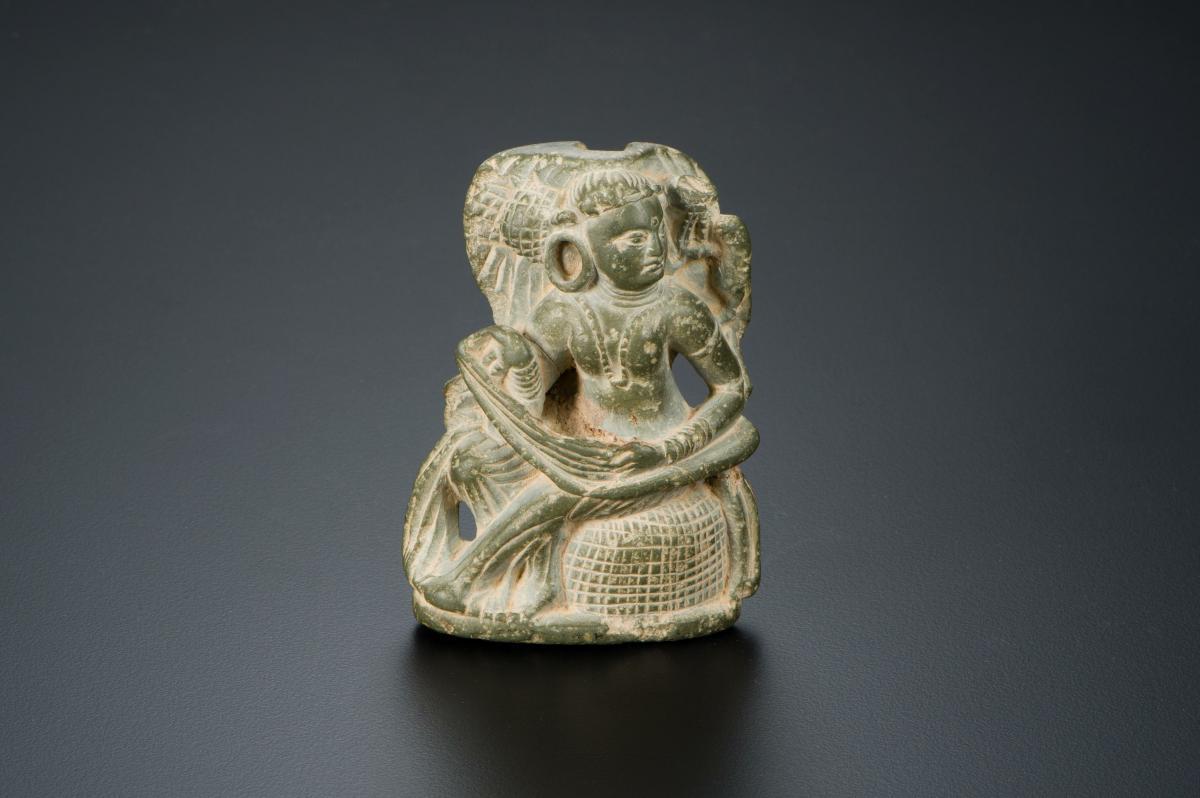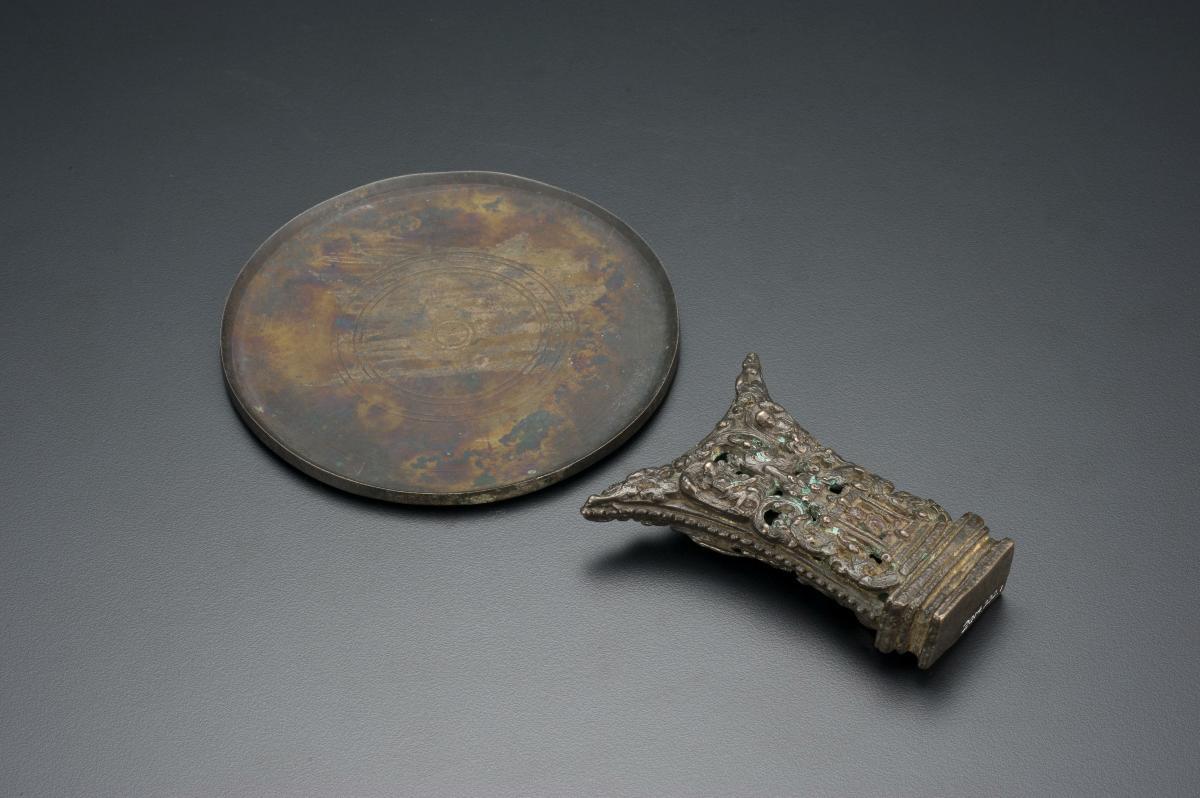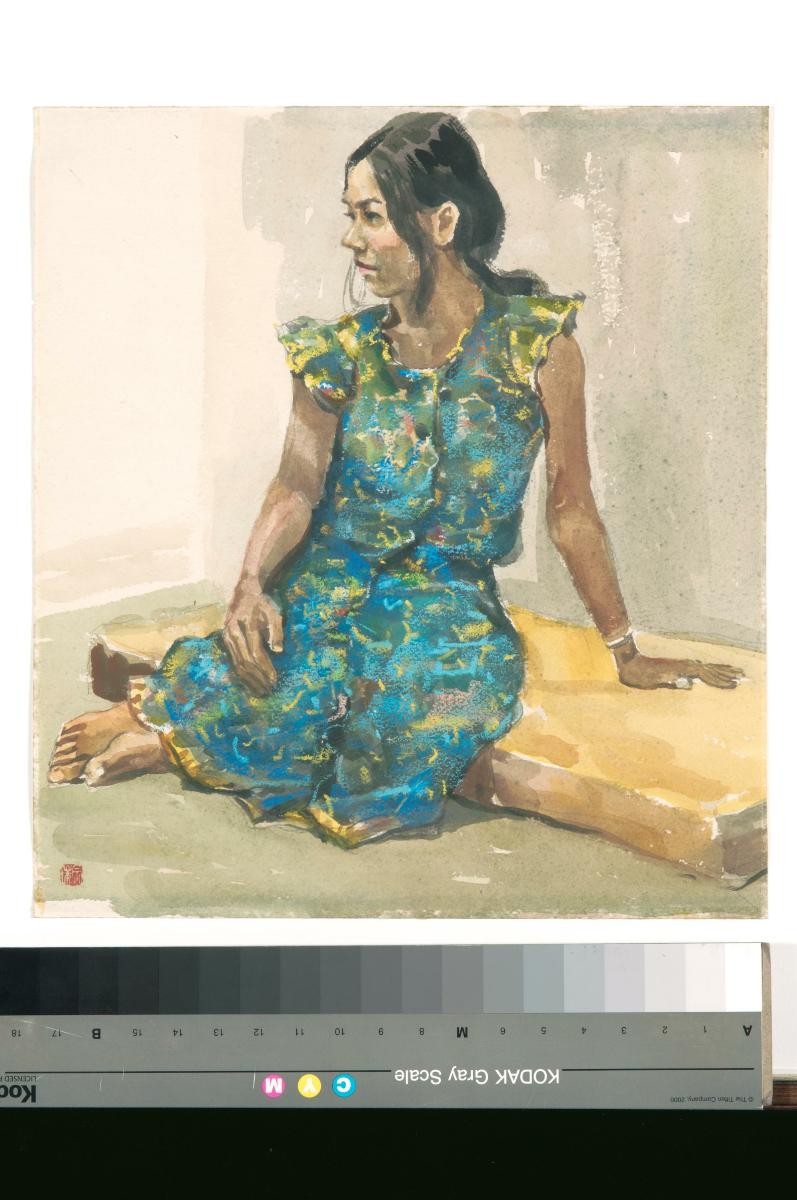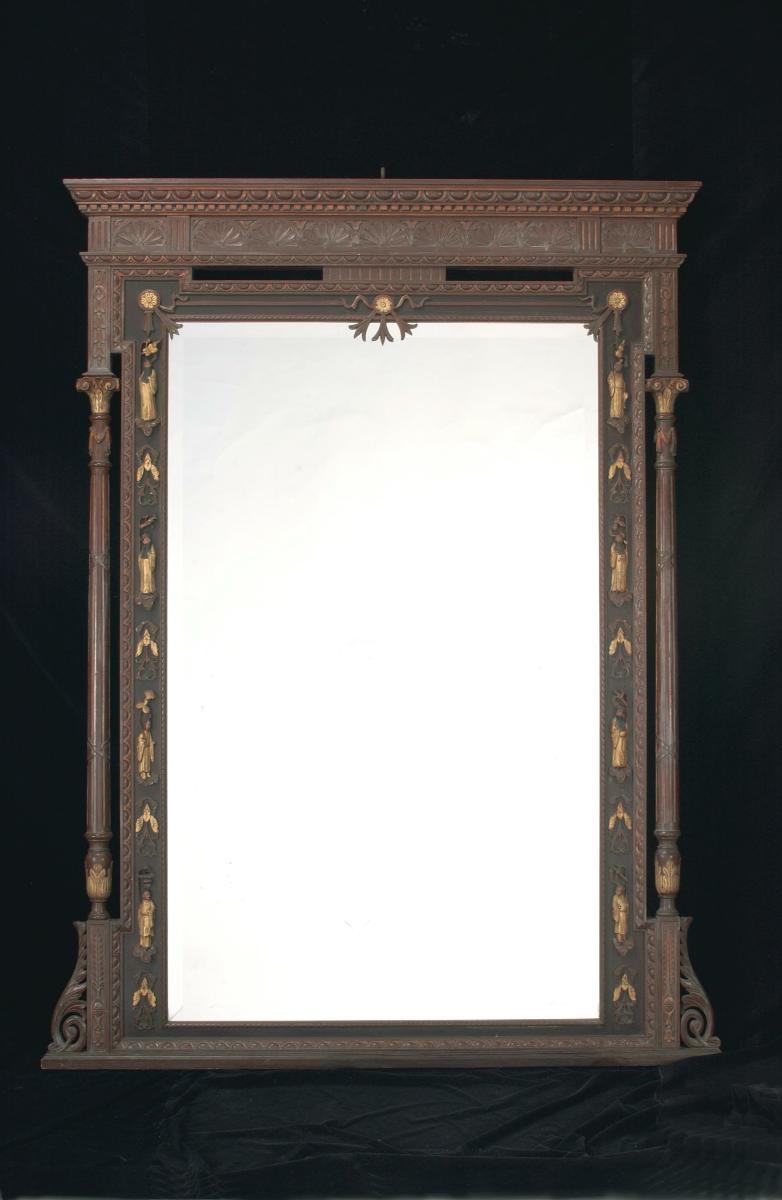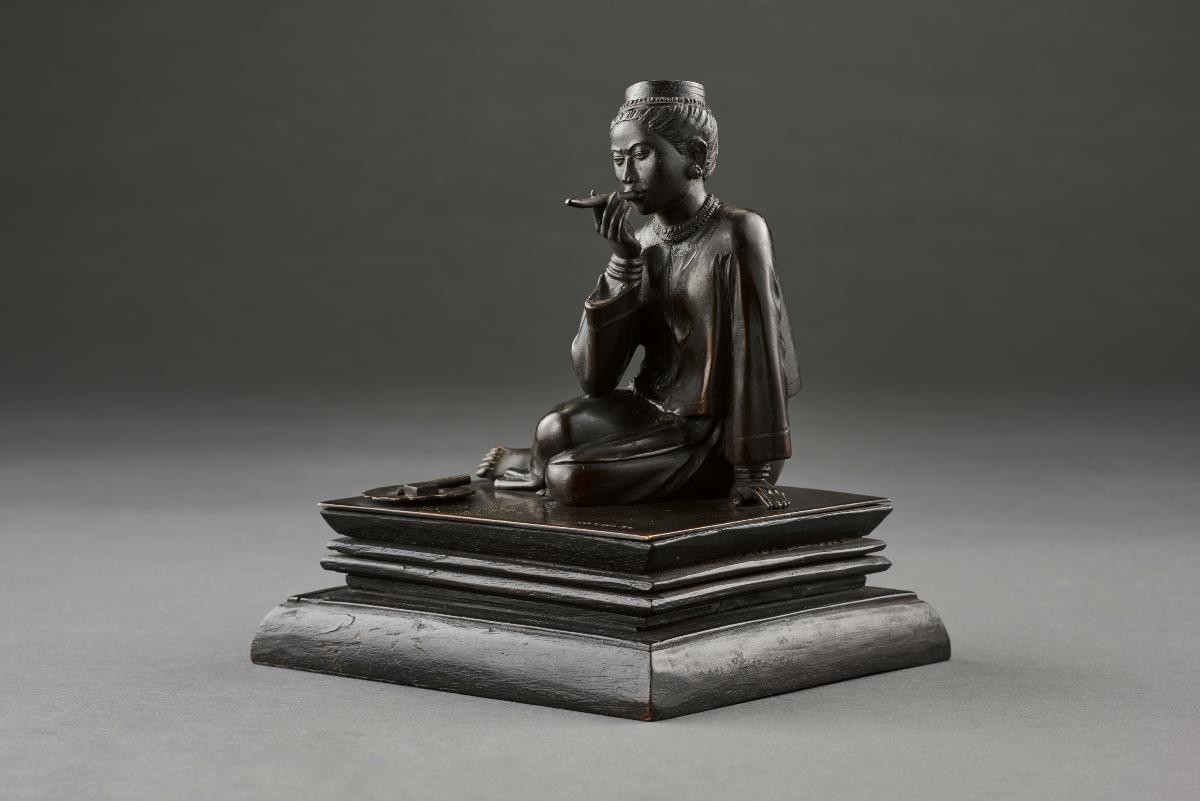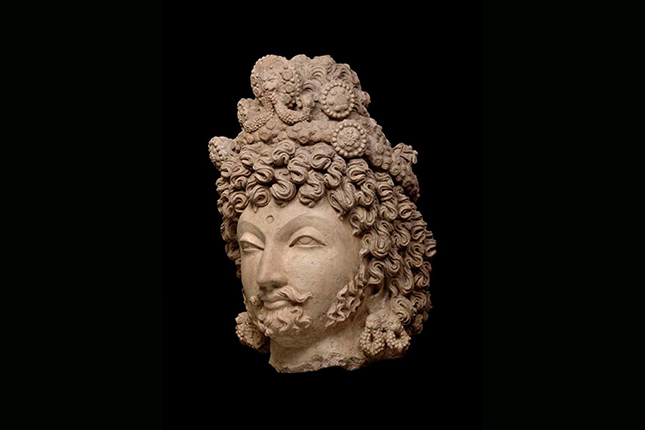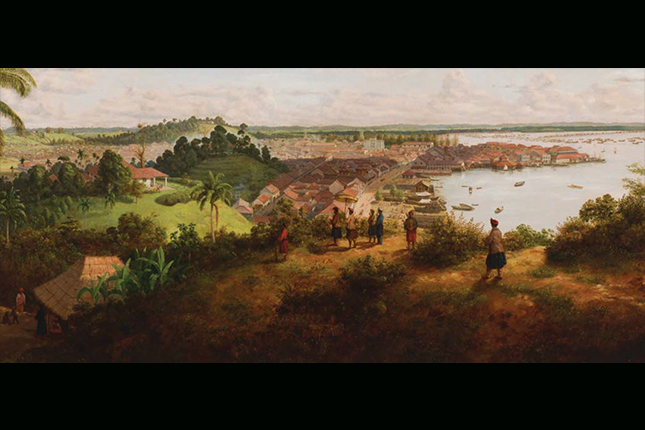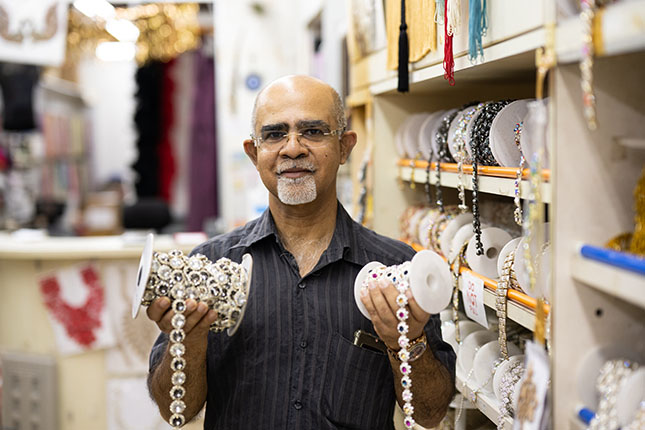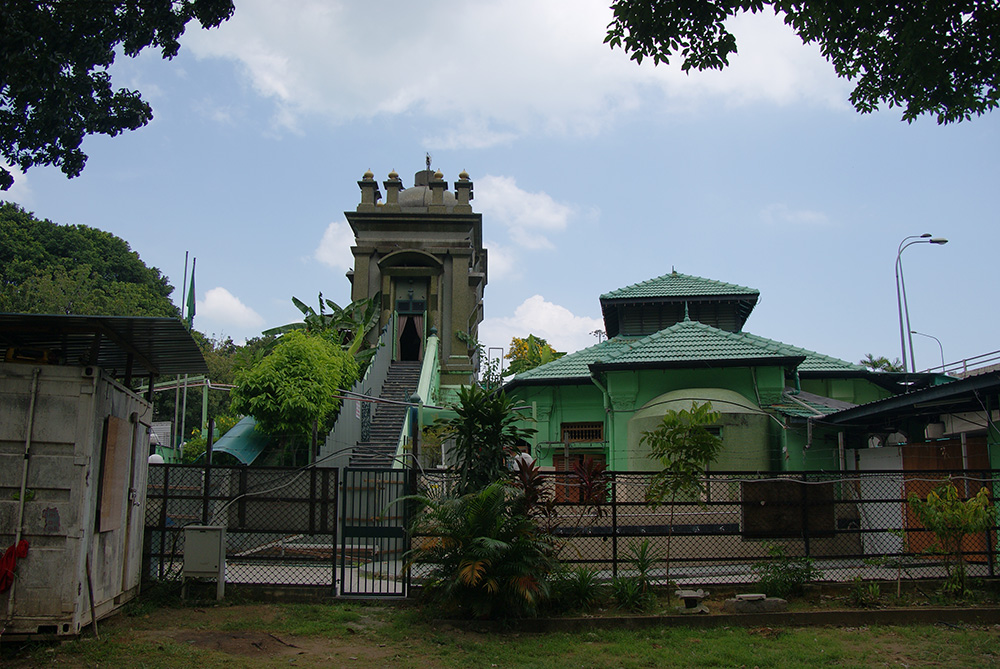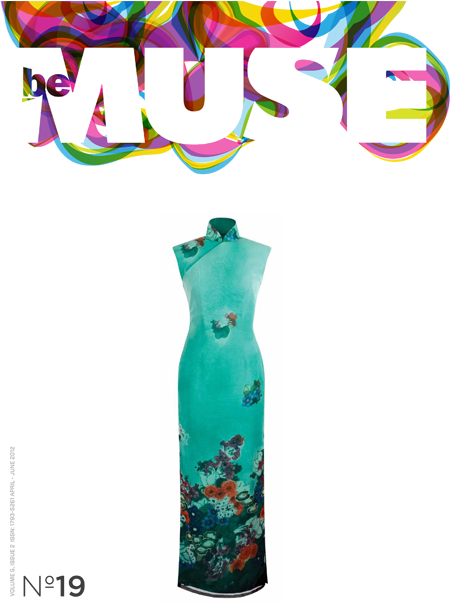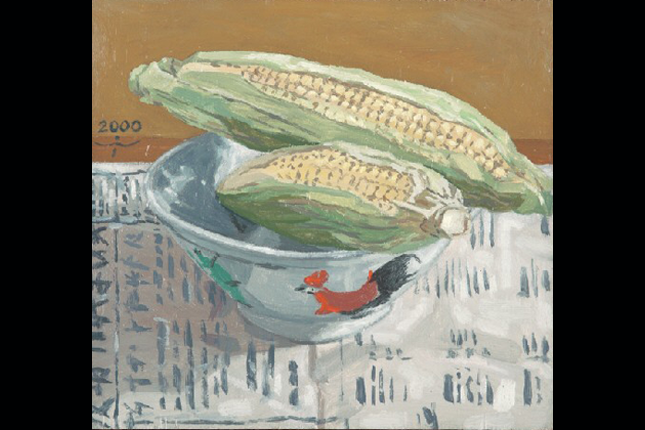Luxury items were popular in the wealthy cities of Kashmir during this period. Small handles in the form of elegant women are known from as early as the Sunga period in India (185-72BC). They were made in bronze and ivory as well as stone. They show the women wearing elaborate jewellery and seated or standing in leisurely poses. A hole in the top suggests it is handle, and they are thought to be mirror handles.On this example the woman is seated and playing a stringed instrument called vina. She wears a long skirt, and jewellery including large, disc-shaped earrings, as well as other beads and bracelets. Two comparable examples from Kashmir and carved in similar stone can be seen in the Metropolitan Museum of Art, New York, 1987.142.39 and 1987.142.35, published in Martin Lerner and Steven Kossak, The Lotus Transcendent: Indian and Southeast Asian Art from the Samuel Eilenberg Collection, New York, 1991, pp. 101-102, figs 69 and 70.




